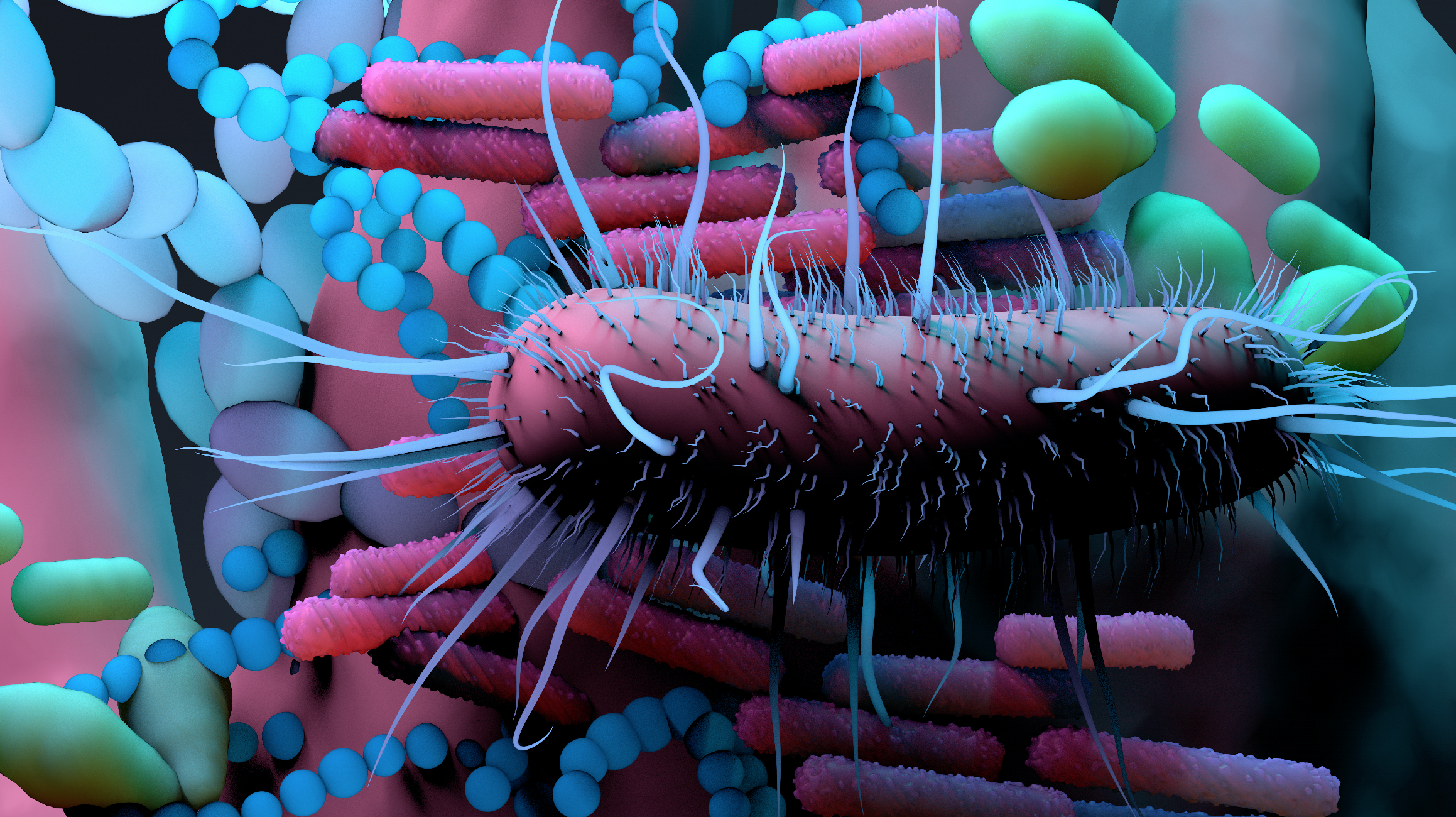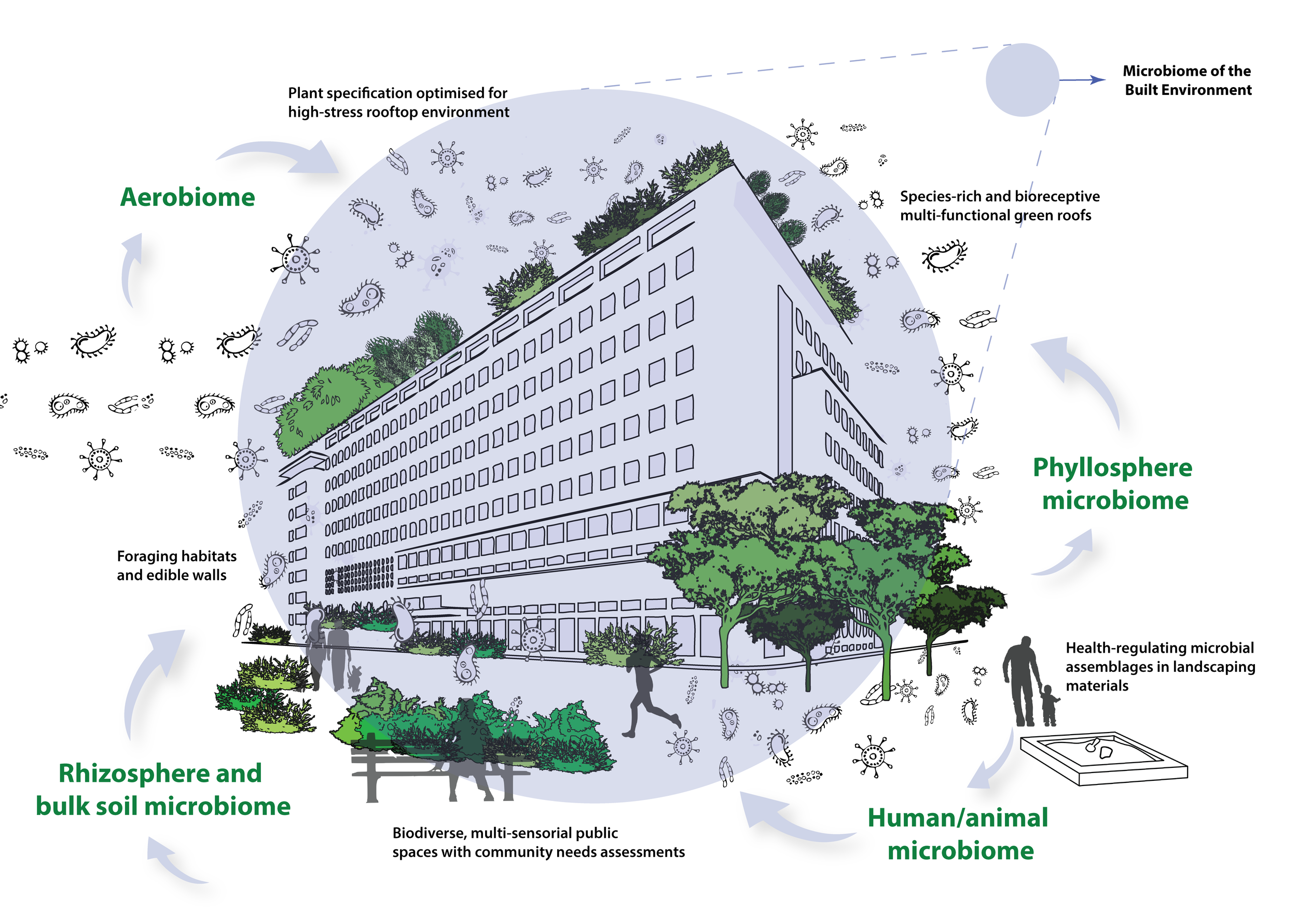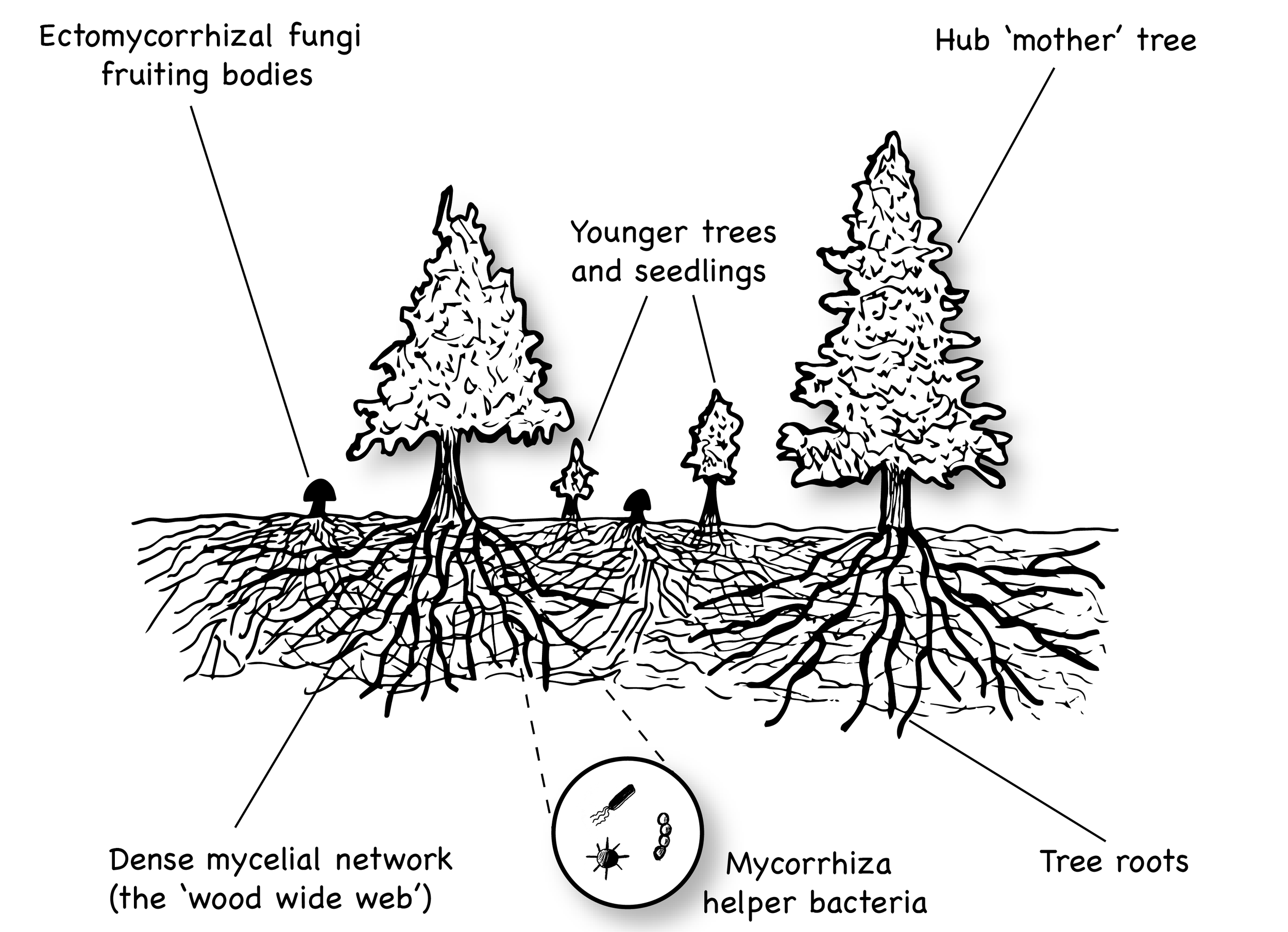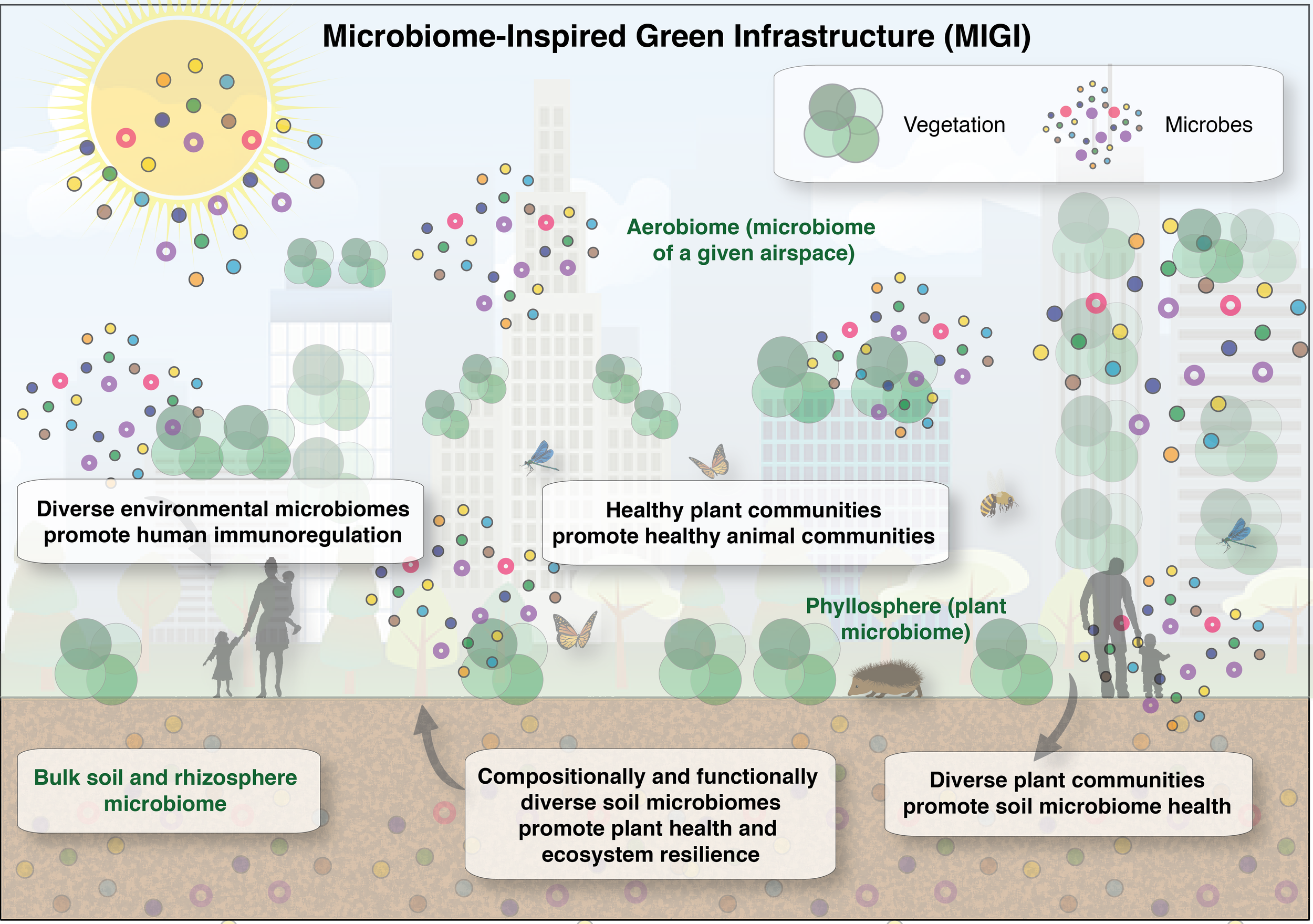What do microbes have to do with landscape architecture?
By Jake Robinson
“The role of the infinitely small in nature is infinitely great.”
--Louis Pasteur--
Landscape architecture is the interdisciplinary field dealing with the planning, designing, managing and nurturing of built and natural environments. It’s an intellectually fertile discipline with myriad subdisciplines – too many to name here! But to give you a flavour: some landscape architects specialise in horticulture and planting design, some in understanding how the aesthetics and arrangement of space influence people's behaviour, and others are involved in the planning and design of stormwater management systems.
In a previous life, my work focused on ecology: the study of organisms and their interactions with their biotic (living) and abiotic (non-living) environments. And I still do, but these days I focus on microbial ecology. This involves studying how:
Microbes interact with other microbes
Microbes interact with organisms other than microbes (e.g., plants, animals -including humans)
Microbes interact with their biotic and abiotic environment
Microbes include any organism too small to see with the naked eye. Unfortunately, their diminutive size means they are under-appreciated. As Louis Pasteur said: “the role of the infinitely small in nature is infinitely great”, but it’s difficult to value what you cannot see. In fact, research has shown that even perceived distance to stimuli shapes a human’s neural empathic reaction to them. For instance, in one study, researchers showed participants two sets of images of painful facial expressions: one set was smaller to manipulate the retina and perceived physical distance (i.e., seemingly further away). The study demonstrated that the human brain responded more empathetically to painful facial expressions that were perceived as being physically closer even when the facial stimuli of the two sizes were proven to be equally identifiable! This research into perceived distance corroborates other studies that suggest people tend to form very different mental representations of stimuli based on their physical distance. This also supports the adage “out of sight, out of mind”. The associated neurochemistry may go some way to influencing people’s drive or desire to acknowledge the importance of the invisible world!
Cognitive neuroscience could hold the key to unlocking our appreciation for the unseen.
Even to people working in an interdisciplinary field like landscape architecture, the relevance of the microbial world to the planning, design, management and nurturing of built and natural environments often slips under the radar; it’s not conceptually obvious because it’s not visible!
This blog post aims to showcase a few examples of how microbes are incredibly relevant to landscape architecture. My broader aim is to stimulate a microbiome-centric research agenda (see MIGI) and establish ways landscape architects and others can design and optimise urban ecosystems with explicit considerations for our invisible friends.
Salutogenic landscapes
One way microbes are relevant to landscape architecture is through their role in shaping human health and wellbeing. Designing ‘salutogenic landscapes’ is a popular topic in landscape architecture. Salutogenic landscapes are those with characteristics that support human physical and mental health and wellbeing. Indeed, the urban environments we walk through are often designed by landscape architects to promote our wellbeing. This is typically driven by landscape research. One aim of planting schemes is to elicit feelings of awe, and the greenness, diversity, and fractal patterns of plants are known to improve human mood and reduce stress. The growing research field of nature connectedness (one’s emotional and cognitive connection with the natural world) is also informing urban landscape design. Moreover, evidence shows that green (terrestrial) and blue (aquatic) natural environments promote physical exercise, thereby improving cardiovascular health.
Biodiverse spaces enhance human health through various biological, psychological and social pathways
But how are microbes relevant to the concept of salutogenic landscapes? Well, growing research tells us that it’s vital to be exposed to a diverse range of environmental microbes from a young age to train our immune systems and prevent nasty maladies. Microbes are also involved in various physiological processes that sustain our health. Importantly, despite being a nascent field, evidence suggests that spending time in biodiverse environments can (a) significantly change the human microbiome and (b) enhance immunological processes in our bodies. Importantly, research shows that we can design and restore our environments to promote exposure to a diverse range of these invisible friends. For instance, more complex vegetation can increase microbial species diversity (typically considered a good thing) and reduce the relative abundance of pathogens; moreover, increasing the topological diversity (i.e., undulating ground up to 1.5 m) will likely promote evenness of microbial diversity in the air due to the soil being the most important source of microbes that feed the air we bathe in as we walk through a given space. Furthermore, we can increase microbial diversity by including bio-integrated architecture in our urban environments, that is, integrating biology within our usually desolate (and probably pathogen-promoting) surfaces.
See work on Microbiome-Inspired Green Infrastructure (MIGI) for how to consider microbes in salutogenic landscape design
Crucially, interdisciplinary microbiome-centric research is needed. We now need to determine the extent of potential downstream health outcomes and work out the best configuration and design of urban features that may promote our health. This provides the perfect opportunity for landscape architects and researchers to integrate microbial ecology and work at the forefront of salutogenic landscape design!
Plant health
Another way microbes are highly relevant to landscape architecture is via their roles in plant health and communication. For instance, landscape architects are often responsible for designing planting schemes in our urban and rural environments. These can include the plants in urban parks, public squares, green roofs, walls and other spaces. Horticulturists select their plants based on various factors, including their functional roles, aesthetic appeal, ecology, and resilience. However, planting schemes often fail in their functional potential and resilience – often, plants fail to survive. This is worrying, particularly as global environmental conditions are changing and becoming more unpredictable due to climate change. Plant drought-related stress and diseases are manifestations of these changing conditions.
I (along with many others) think we need to view plants as complex ecological systems and not as single entities. By this, I mean plants are a host to millions of microbial partners, working symbiotically with the soil to form functioning ecological units. Plants are communities. Communities are complex. Complexity drives resilience. Resilience is vital to ecosystem health. Embracing microbial ecology can play a role in optimising planting schemes and contribute to resilient landscapes.
Microbes in the soil can release plant growth-promoting compounds; dense mycorrhizal networks can enhance plant health through vital roles in nutrient and water absorption, and bacteria can boost the abilities of mycorrhizae. Certain bacteria can secrete antibiotic compounds to help plants fend off pathogens. Some microbes can increase plants’ tolerance to stressors such as drought and salinity. In return, plants provide soil microbes with a host of health-promoting chemicals and nutrients: it’s a mutualistic relationship! These ecological interactions may be complex, but understanding them may be key to ensuring our future landscapes are resilient. Crucially, by working in an interdisciplinary manner, landscape architects and researchers can join forces with microbial ecologists to tackle these complex issues. I truly believe that landscape architects working with trees, green roofs, and bio-integrated features can benefit from the integration of ecological knowledge. From an applied perspective, microbial ecologists can inform practices such as inoculations (where beneficial microbes are inoculated into the soil and plant roots to enhance their health) and more holistic practices that build a robust soil structure and community.
Soil microbes play a role in plant heath and communication
Stormwater management
I’ve recently worked in Norway with talented landscape architects and have gained insights into the importance of stormwater management. Landscape architects are often involved in the design of stormwater management systems. These can include bioswales (vegetated channels intended to capture runoff) and rain gardens (landscaped features designed to collect stormwater), amongst other features. Microbes play a role in stormwater management by enhancing plant health and growth (see above). Plants are key to both infiltration of water into the ground and the absorption of water fed into the landscaped features by a series of channels. Microbes also play a role in soil aggregation. Indeed, bacteria, fungi and algae bind soil particles together, forming clumps. Why is this relevant to stormwater management? Well, soil aggregates (the clumps) provide different infiltration pathways, allowing water to trickle down by creating grooves and channels that lead further into the ground. Soil aggregation is also important to prevent soil erosion via stormwater torrents. Without the clumps, soil particles simply get swept away. Therefore, including considerations for microbial ecology in these landscape architectural systems could significantly enhance the objectives of this important discipline.
Microbes are involved in soil aggregation
Bioremediation
Bioremediation is my final example of how microbial ecology is relevant to landscape architecture. This is the process by which biological organisms (including microbes and plants) are used to remove (in the case of organic compounds) or neutralise (in the case of inorganic compounds) environmental pollutants by metabolic processes. Pollution is a by-product of our modern lifestyles. Tackling air, soil and water pollution should be a priority as chemicals and particulate matter flow into our ecosystems from vehicles, factories and industrial processes. These pollutants threaten the health and survival of animals (including humans) and plant communities. When designing resilient environments, landscape architects may consider the effects of pollution and how to mitigate their impacts on ecosystems.
Growing research demonstrates the ability of microbes to remove and neutralise pollutants in various environments, from soils to water. They often form powerful biofilms (consortia of microbes that stick together and are embedded within a slimy extracellular matrix). Biofilms allow microbes to carry out potent group-based behaviours, some of which may include degrading nasty pollutants. Microbes can form these biofilms by talking to each other via a process called quorum sensing. That’s right – microbes can communicate too (“socio-microbiology”)! They use special cells to signal their presence and detect the abundance of other microbes nearby. This way, they can tell when the time is right to mount an effective group-based action. Safety and power in numbers! Microbes have been shown to consume organic pollutants, change the nature of inorganic contaminants, and convert them into less toxic forms. Researchers have created filters containing pollution-munching microbes that can be installed in landscaping features. Landscape architects have an opportunity to integrate microbial ecology into their designs to reduce the negative impacts of pollution on ecosystems.
Yet, despite all of the amazing roles that microbes play in bioremediation, it’s important to say that tackling the source of pollution should always be our top priority!
Microbes are often fundamental to bioremediation, but we need to tackle the source of pollution!
Concluding remarks
In this blog post, I’ve provided a few examples of how microbial ecology is relevant to landscape architecture. But this is far from an exhaustive list. I hope the wonderful world of microbes continues to be included in landscape architecture and research. The ongoing advances in DNA sequencing technology, visualisation technology, and the increasing interest of artists and designers can help us disintegrate our cognitive blindspots, make the invisible visible and form new relationships with our microbial partners. Landscape architects can have an important role by joining forces with microbial ecologists to create tangible actions and gain new insights into how the “unseen” contribute to resilient landscapes.
Find out more about microbes in landscape architecture in my forthcoming book Invisible Friends—soon to be published by Pelagic Publishing.








